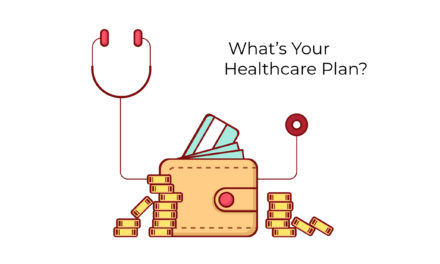The Required Minimum Distribution (RMD) is your retirement plans’ reckoning with the IRS. When you first opened your IRA, 403(b), or any other qualified retirement plan, you were enjoying deferred income taxes on the contributed dollars. Unfortunately, your qualified plan has been growing an unpaid tax.
The RMD mandates a calculated portion you must withdraw and pay regular income tax on each year after age 72 regardless of your needs for these funds.
The distribution calculation changes every year and is determined by the value of qualified assets you have on December 31 of each year. If you fail to take the withdrawal, you incur a 50% penalty in addition to the tax.
The RMD can be even more burdensome as the requirement applies even during market down years. This compounds your portfolio’s loss, making it very difficult to break even as it forces you to either spend the distribution or find another avenue for investment. If that new investment is also taxable, you have permanently diminished your retirement power.
But here’s the good news: some solutions can reduce and even eliminate the RMD burden.
Building a thoughtful retirement plan can help you effectively use RMDs to reach your financial goals. A knowledgeable financial professional can help you understand the options while meeting the IRS requirements to help avoid a costly tax mistake.
RGA’S TOP RMD SOLUTIONS

INSURANCE
These insurance policies invest your premiums (minus cost) through market indexing. Many investors transfer assets from IRAs, taxable investments, and cash for these market index returns. The returns cannot go backward. This means you’re sheltered from market threats. The insurance company will lend you money against the value of your policy. You can structure this borrowing for yearly income and pay the tax incurred when you make the transfer. Borrowed money is not subject to tax. The insurance companies can even “lend” you money to pay the taxes on your qualified plan.

ROTH CONVERSIONS
For those who haven’t reached age 72, you can systematically withdraw funds from the qualified plan before RMDs ever begin and roll them over into a Roth Plan. Unlike traditional IRAs and other pre-tax retirement accounts, a Roth IRA is not subject to the annual RMD. Dollars held in a Roth permanently avoid any RMD obligations for the rest of the account owner’s life. Of course, this strategy is tax-wise only if you anticipate that your tax rate when you transfer to the Roth will be less than the tax rate at the time the RMD is due.

KEEP WORKING (IF YOU WANT!)
If your employer establishes your qualified plan as part of the company’s employee benefits program, you may be eligible to delay the RMD requirements. An exception applies to the standard RMD age rule for certain employer-sponsored plans. Keep in mind, this exception applies only to that specific employer’s retirement plan accounts, and not any other retirement accounts.

MAKE CHARITABLE CONTRIBUTIONS
The Internal Revenue Code allows qualified plan owners to make a “Qualified Charitable Distribution” from an account directly to a charity, and entirely avoid any tax consequences associated with the withdrawal. While the donation to the charity is not eligible for a charitable deduction from income taxes, the withdrawal does count toward the RMD. The RMD is satisfies and taxes on the charitable gift are saved.

QUALIFIED LONGEVITY ANNUITY CONTRACTS (QLACS)
This is a government sanctioned and promoted annuity. The plan allows you to exclude a portion of an IRA or 401k from the RMD up to age 85. Then, you must take income from that annuity, which will be taxed from then on. The QLAC provides a known and guaranteed stream of income and security of cash flow that will continue for the life of the owner.

NEW INNOVATIONS
Insurance and annuity companies are continually coming up with new ideas to deal with the RMD burden. A new and popular strategy is the use of a non-qualified indexed annuity, which you can do a tax-free transfer from your IRA accounts. Once established, the funds are no longer subject to the RMD. You have created a rollover annuity for your RMD to grow tax-deferred (after tax) from then on.

NEXT STEPS
If avoiding RMDs sounds like something you want to do, then meeting with a financial advisor is the next step. At RGA, we use a holistic approach to strategize your RMD whether it is years away or already started. We make it easy and convenient to chat about your options. Contact 1-800-467-8152 or email info@RonaldGelok.com for a complimentary 30-minute conversation to point you in the right direction.









